CONTENTS
The visit of the 40th is a sign of faith.
The conflict between right and wrong lasts forever. Its effects and results can be seen in life and afterlife. Whether the person is doing the right or the wrong thing, he will get what he deserves at the end, and no matter how the wrong thing spreads out and no matter how many people are doing the wrong thing, at the end they will be punished for what they did now and hereafter.
While the right thing, even if it is hard to do, and very few people are doing it, its results are pleasant and fruitful.
The greatest battle that happened in the history of humanity between right and wrong is the one that took place in the land of Ghadhiriya between Emam Al Hussein bin Ali Bin Talib the grandson of the prophet Mohammed, and the evil represented by Yazeed and his army in Altaf battle in Karbala which represents the symbol of the victory of right through all the decades.
God loves his worshipers who work hard to please him, especially the prophets who believe in afterlife and try their very best to prevent injustice in the world. Their reward will be to live in heaven and their remembrance will last forever. As God said:
“Whoever wants the afterlife and tries to get it while he is a believer, he will be rewarded.”
God praised the efforts of Emam Al Hussein so he made him an example to follow and made his visit a protection from hell, and a symbol of faith.
As the Emam (P.U.H.) recited:
“When the prophet (P.U.H.) visited us, Om Aymen gave us yoghurt, butter and dates. After he ate some, he went to a corner of the house to pray. When he was in his last prostration, he cried a lot. No one asked him why as a sign of great respect. Then Al Hussein stood up and sat on his lap and said” you visited us and made us extremely happy then you cried hard, so you made us very sad. What made you cry? “
He replied: “Gabriel came and told me that you will all be killed and scattered in various places.”
AlHussein said: “What about the people who will visit our graves?”
He replied: “Those are a group of my people who will visit your graves to get blessings, then I will be obliged to support them on the doomsday, and free them from their sins so they can go to heaven”.1
This is what our prophet (P.U.H.) said, and we Muslims have to follow what he said or did. Therefore, when he cried on AlHussein, we should do the same and cry too. The angels in the sky and the prophets cried as well.
There were many stories told before, that mentioned the blessings of crying over Al Hussein and his family.
• Al Majlisi narrated the story of the prophet Musa with Al khithiir, when he introduced himself and asked Al khithiir to give him some knowledge, then he told him about what was going to happen to prophet Mohammed’s family, then they both cried. 2
• Ibn Nama narrated in his book (the sadness starter) that when prophet Mohammed (P.U.H.) got very sick, he hugged Al Hussein and reviled Yazeed then he fainted. When he was awake, he started kissing Al Hussein and crying, saying that his assassin will be tortured hereafter by God.3
• Al Rayan Bin Shabeeb , whose story was the most famous one. When Al Ridha (P.U.H.) said to him: “ If you are going to cry for any reason then cry over Al Hussein Bin Ali Bin Abu Talib, because he will be slaughtered like the sheep along with 18 great men from his family whom there are no one like them ever. If you cry till your tears ran down your cheeks, God will erase all your sins no matter how awful they are.”4
•
As crying over Al Hussein (P.U.H.) is considered a good deed, visiting his grave is considered a great thing to do, by any Muslim, whether male or female.5
As Emam Al Bakir (P.U.H.) said: “ On the doomsday, with all its horror and fear, the visitor of Al Hussein will not be scared and will be calm”
Visiting Al Hussein started by his sons and grandsons. A man once saw Emam Zein Al Abdeen (P.U.H.) in Al Kufa mosque, and asked him: “How come you visit the place where your father was killed in? “then he replied “ I visited him
and prayed in the mosque.”
Visiting Al Hussein can be done remotely, too. One narration said: A man called bin Sadeer was asked whether he visits Al Hussein daily, weekly, monthly, or annually? He said that he can visit Al Hussein even several times a day, remotely simply by climbing the roof and moving his head to the right and to the left then up to the sky then toward the grave and saying:
( Peace upon you , Abu Abdullah )8 Then a visit is recorded to him which is considered as a pilgrimage and umra as well.
Some scientists said that this visit is compulsory since there were many narrations about it.
Emam Al Sadik (P.U.H.) said “whoever believed in Al Hussein, has to visit his grave” and he said, “The days people spent on this visit are not counted from their ages”.
Another narration was: “On doomsday a crier calls the people who visited Al Hussein? Then a countless number of people will stand up. He will ask them about the reason for their visit. Then they will reply that the reason is their love for prophet Mohammed, Ali and Fatima. Therefore, he will ask them to join Mohammed, Ali and Fatima in their high level in Heaven.
The best days to visit Al Hussein are:
• The day before Eid Al Athha.
• The two Eid’s.
• Mid of Sha’ ban.
• The beginning and the mid of Rajab.
• Friday’s nights and days.
• The Day of Ashura.
• The visit of the 40th .
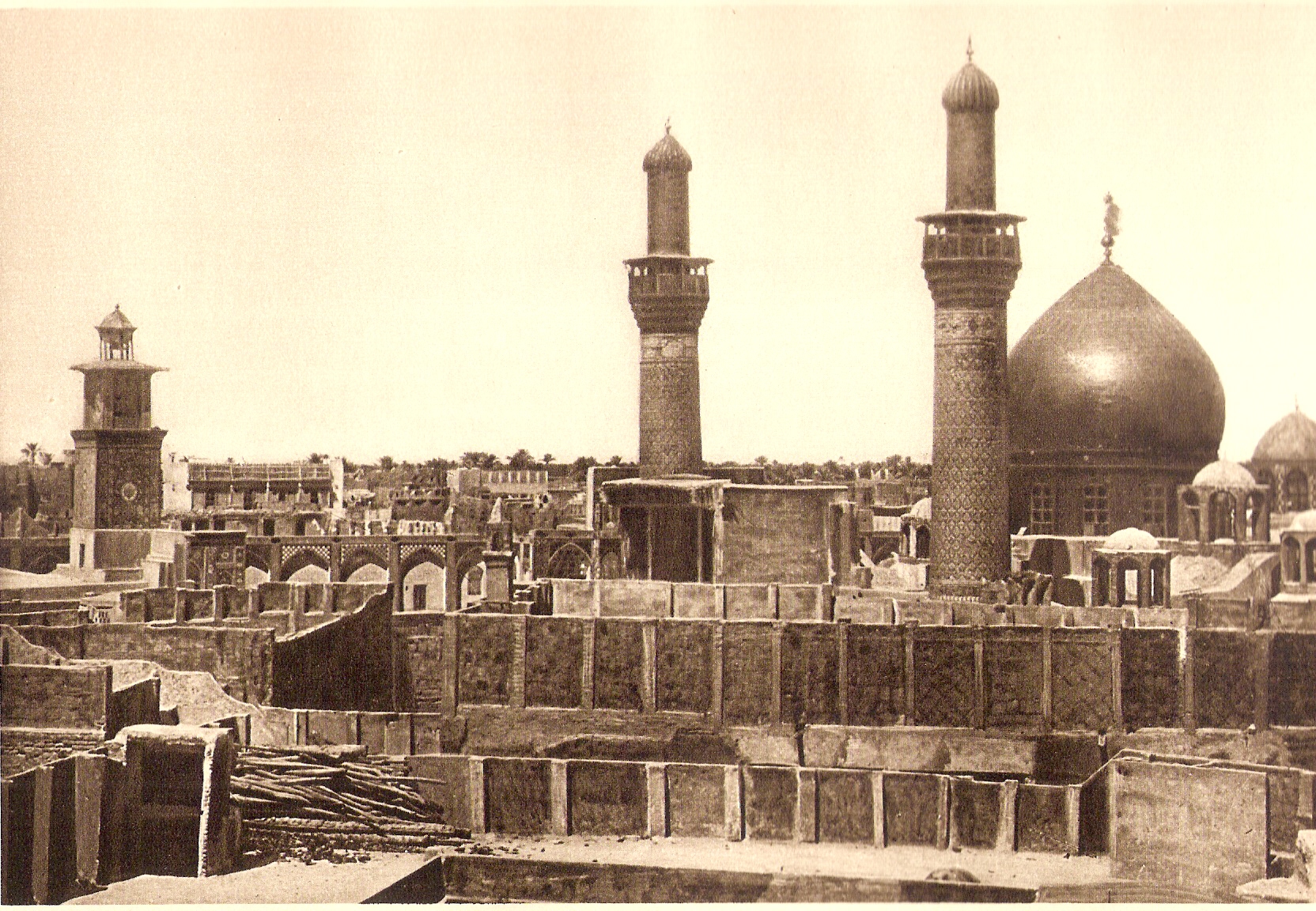
صورة لمدينة كربلاء القديمة تعود لعام 1926م
The visit of the 40th
Usually different nations, and people build graves for their leaders to symbolize them and make people understand their sacrifice and love them. Sometimes these attempts work out, other times do not. Nevertheless, for Al Hussein, the situation is different. People will remember him forever, since he represents a symbol of fighting, struggling and sacrifice. Visiting him on the 20th of Safar i.e. after 40 days of his martyrdom, is evidence of faith as mentioned by Emam Al Askary.
He said: The signs of faith are five:
• The prayer of the 50th.
• The visit of the 40th.
• Dusting the forehead.
• Wearing the ring in the right hand.
• Saying loudly “ In the name of God the merciful”
Naming the visit of the 40th
This visit was called by this name since it represents the passing of 40 days on the martyrdom of Emam Al Hussein (P.U.H.) on the 10th of Muharram in 61 Hijri, that is the 20th of Safar.
Many well-known people of different religions, from inside and outside Iraq, participate in it. They gather to remember the tragedy of Altaf battle. Millions of people come to visit the graves of Emam Al Hussein and his brother Alabbas (P.U.T.)
Some people come walking to represent the marching of the female captives of the prophet’s family from the Holy Karbala to Levant.
Those visitors try to send the Emam’s message to the whole world through what they do and say on this occasion. This occasion should be used to teach people some good ethics and how to be better in their thoughts and behavior.
To improve the religious thoughts, the seminary prepared religious centers among the visitors and in different places to pray together and to listen to some speeches and lectures, to distribute books and booklets to achieve the goal of the visit.
Visitors show the world through the well-organized gathering, the good ethics, the cooperation between them, the massage of the prophet’s family of being good Muslims in everything they do or say.
Starting The visit of the 40th
It was narrated, that before the visit of the 40th , a man called Jabir Bin Abdullah Al Ansari came from Al medina to Karbala to visit the grave of Emam Al Hussein (P.U.H.) and it was after 40 days from the anniversary of his martyrdom, and on the same day the sons of Emam Al Hussein (P.U.H.) were returning back from Levant to Karbala under the leadership of Emam Zein Al Abdeen, and they met there. From that day on, the visit of the 40th started.
The story behind the visit of the 40th
When Jabir Bin Abdullah Al Ansari came to visit the grave of Emam Al Hussein (P.U.H.), he stopped at the grave and screamed, (Ya Hussein) three times then started crying and saying words praising Al Emam and wailing. After that he looked at the other graves and started talking to them.
On the same day the heads of the people who were killed at Altaf battle were returned from Levant to their buried bodies in Karbala. This is how the visit started.
It was narrated also that Emam Al Sadik said the visit should be during mid-day, and certain words should be said mentioning how Al Emam and his family were brutally killed defending the words of God and Islam and praising him and his family.
Then 2 kneeling should be done while praying, asking God anything you wish.
How the concept of the visit of the 40th spread.
Since that day when Jabir visited the grave of Emam Al Hussein (P.U.H.), it became a tradition to make that visit on the 20th of Safar which is 40 days after the martyrdom of Emam Al Hussein (P.U.H.), especially after Emam Al Sadik mentioned how important is this visit, in all his speeches to Shi’as.
Despite all the suppression, torturing and killing of those visitors, and despite smashing the grave during the Abbasid ruling and prohibiting people from coming
any place close to it, people still come from around the world to visit. They believe that this visit is something that everyone must do. They believe that the angels will pray for the visitor and will ask God to forgive him. (17)
In Iraq, the previous regime was afraid of any gathering of people, especially in Karbala and especially on that day, since it represents the revolution against injustice, and oppression, so he prohibited them from any gathering or demonstration on that day.
The reverberation of Hussein revolution was not only in the Muslim countries, but it spread out and reached other countries who were seeking freedom.
Mahatma Ghandi, who was murdered on the 30th of January 1948, said “ I learned from Al Hussein to be oppressed and then to triumph.”
The visit of Al Hussein is something spiritual not earthly. It is to become closer to God. It is not just a celebration to praise a dead person, it is a way to renew the commitment to Islam.
Emam Zein Al Abdeen set an example for the importance of this visit by coming from Al medina to Karbala to visit the grave of Al Hussein.
Emam Al Hussein (P.U.H.) was and still is a symbol of sacrifice, to make the people free and to get rid of any oppression and injustice, to support Islam, and not to let a godless person rule Muslims. He should be the model for every Muslim to follow.
References:
- ↑1. المُختار من كلمات الإمام المهدي 2:349 .
- ↑2.الكافي: 1367.
- ↑3. مثير الأحزان، محمد بن جعفر بن نما الحلي ،منشورات المطبعة الحيدرية في النجف، 1369ه/1950م.
- ↑4. الشعائر الحسينية :7.
- ↑5. الشعائر الحسينية :76.
- ↑6. الوسائل :10/356.
- ↑7. ثورة الحسين عليه السلام :58.
- ↑8. الوسائل :10/385.
- ↑9. كامل الزيارات :121.
- ↑ 10. التهذيب للشيخ الطوسي: 6 / 43 .
- ↑11. كامل الزيارات ، للشيخ جعفر بن محمد بن قولويه ، ص 142 .
- ↑12. تهذيب الاحكام : ٦/ ٥٢
- ↑ 13. الكافي:٤/ ٥٨
- ↑14. الكافي : 4/581
- ↑15. الكافي : 4/581
- ↑16. الكافي:4/113.
- ↑17. اليقين: ٤٠١.
- ↑18. كامل الزيارات: 289.
- ↑19. مَن لا يحضره الفقيه: ٢: ٥٧٧.
- ↑20.ثورة الحسين في الوجدان الشعبي: ص58.


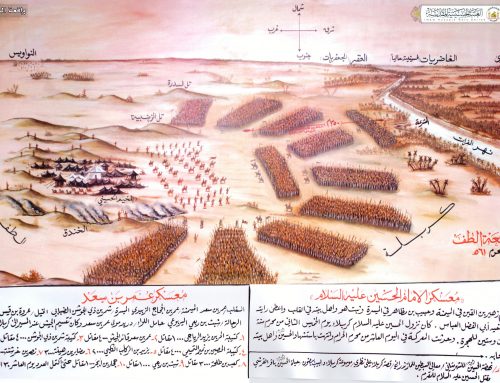
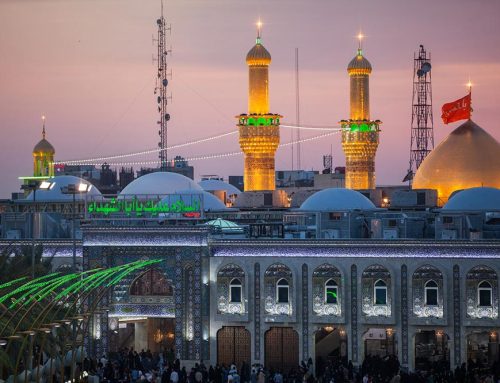
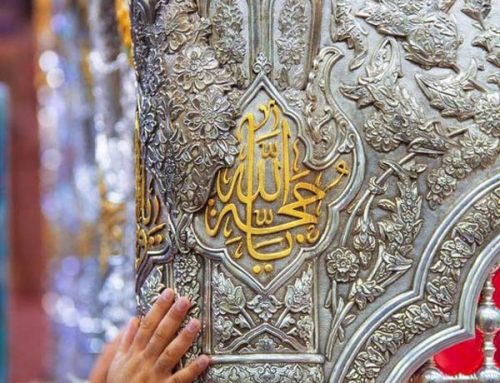

Leave A Comment